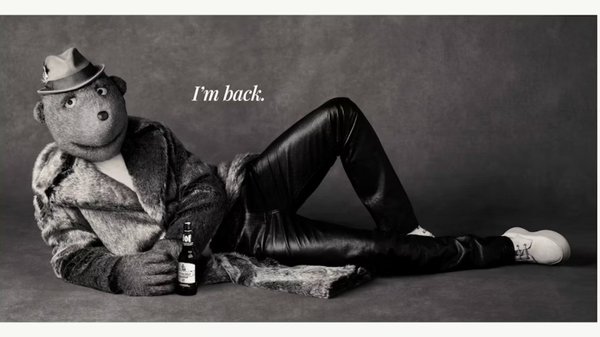Plummeting differentiation shows brands ‘sleepwalking into oblivion’ /
Kantar research shows that 'meaningful difference' among brands has declined for eight years straight. Dom Boyd, managing director, UK Insights at Kantar, explains why this is bad news and offers tips for getting back on track.
Contagious Contributor
/
Photo by Christopher Rusev on Unsplash
We’re suffering from a brand differentiation crisis, which is a potential time bomb in our industry. BrandZ reports how brands’ scores for ‘meaningful difference’ – the biggest predictor of brand power and the main driver of sustained financial growth – has been falling over the last eight years in the UK, and has continued to drop this year to a new low in the BrandZ UK Top 75.

This long-term decline suggests that brands have lost their way in terms of what they need to do in order to grow value. If meaningful difference is declining at the rate it is, it’s an indicator of a weakening connection with customers at a time when they are less loyal, and it’s harder to attract new ones. This means a brand’s ability to drive margin and profitability is significantly reduced. Brands are sleepwalking into oblivion.
Worryingly, we’ve seen how this can have far-reaching consequences – a quick snapshot of UK high street brands highlights how those with low meaningful difference have not survived.

At the same time, we’re seeing something of an effectiveness crisis in advertising. It’s still an important driver of growth, but public favourability has declined. Kantar data shows that the number of people who find TV advertising annoying has almost tripled from 16% to over 45% over the last 20 years, while enjoyment has halved from 32% to around 15% since the 1990s.
Partly this is due to marketers being sucked into a digital ‘black hole’ resulting in over-investment in short-term, digitally-driven activities leading to a radical reduction in creative effectiveness. As Peter Field’s analysis of the IPA data bank has revealed, creatively awarded campaigns are now less effective than they have been in 24 years of data analysis.
But there’s something else. It seems the fun is disappearing from creative work as well. You’re twice as likely to see an ad without some form of light-hearted humour today than you were 20 years ago, and that’s a flashing warning sign for brand owners. Humour is one of the most powerful creative weapons of all, which makes brands more likely to stand out, more likely to be felt to be relevant during the purchase journey, and more likely to be successful years later.
Let’s not forget that our brains are hardwired to respond to emotion – it’s the magic ingredient that compels us to do stuff - so it shouldn’t come as a surprise that it’s the ads that make us laugh that help brands stand the test of time, whether it’s meerkats selling insurance, Nike selling athletics gear or Snickers selling chocolate.

Simply put, too many brands are losing their mojo. So what can marketers do?
First, brands must be braver in creating and articulating their difference. Kantar’s pioneering new work with Oxford University’s Said Business School shows difference is the single biggest factor driving abnormally big outperformance on the stock market. So understand what your difference is and express it emotively. Don’t try and be everything to everyone, or you end up being nothing. What makes you valuable, special, different?
A great example of this is Dyson, whose brand value has been increasing steadily over the last few years, fuelled by powerful innovation.
Second, a brand that doesn’t leverage its difference becomes diluted fast in today’s stream, so be ruthless about bringing your brand’s most distinctive assets to life consistently across every surface. Our data shows clarity of message has never been more important; brands with a higher clarity of image have a 70% bigger impact on sales growth.
Dom Boyd, Kantar
This is the big new challenge for the next generation of marketers. The more touchpoints a brand uses, the more potential there is for it to be diluted, especially when you’ve sometimes milliseconds to make an impression.
So it’s never been more important to really understand your brand’s meaningful difference – the impression it delivers not just in your audience’s heads, but in their ‘gut’, through the actions you take, the innovations you deliver and the way you use every sensory asset to concentrate your power. If you don’t have a clear idea of your brand’s beating heart, then neither will anyone else.
Greggs, the UK high street food retail brand that inspired the now famous ‘veggie sausage roll’, is a great example. Since 2015 it has grown its brand value by 46%, fuelled by meaningfully different innovation – innovation that creates strong brand perceptions, as well as meeting a need.
Third, effective communications are no longer enough. Increasingly, brand value is being built through taking action. In particular, action driven by responsibly minded innovation and customer experience. In fact, we’ve seen responsibility – BrandZ’s measure of the impact of a brand on both the environment and society – become three times more important in the last five years.
This is an area marketers need to pay attention to; value growth is created outside traditional areas of expertise that involve other stakeholders, and it’s an area where many UK brands in particular lag behind global competitors.
But there’s a vital role to play: the innovation, initiative or experience must be right for the brand and the category context to unlock real value, and that plays to marketers’ strengths. Brands like Ikea, which has embraced digital to build on its famous catalogue and attract digitally native audiences, show the transformative value of this connected approach to building value.
Finally, there’s never been a more important moment for marketers to demonstrate their commercial value through speaking the financial language of the board, and getting as excited about the commercial impact as about creativity. There’s no excuse not to. The firepower of strategically driven, advanced analytics means it’s never been easier to build a 'blended scorecard' with senior stakeholders that can predict both short-term and long-term financial value outcomes around the priorities the business cares about most.
That’s an incredible opportunity not only to build brand value, but also to stop getting stuck in the ‘colouring in’ communications box and start showcasing transformative leadership abilities. And that’s something brands – and the world – are crying out for.
Want more of the same? /
We don’t just write about best-in-class campaigns, interviews and trends. Our Members also receive access to briefings, online training, webinars, live events and much more.







